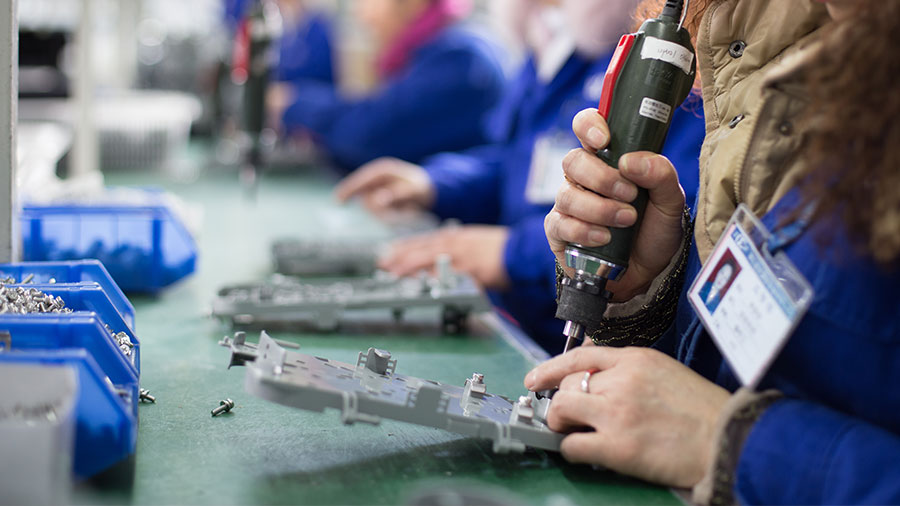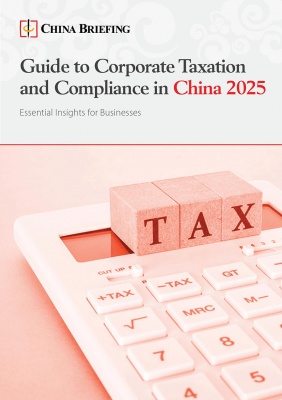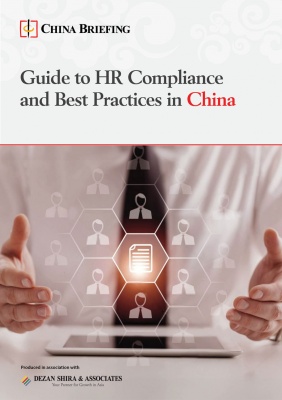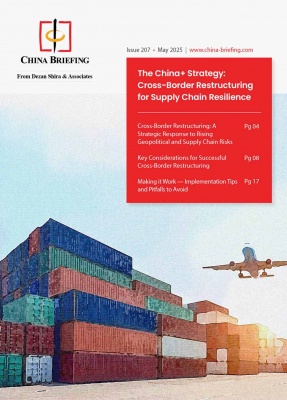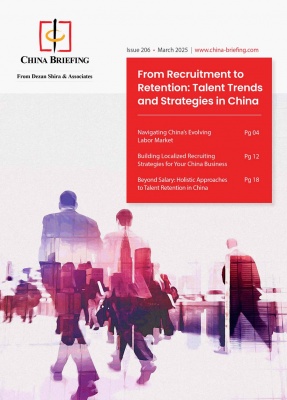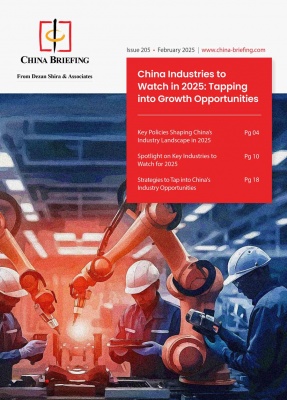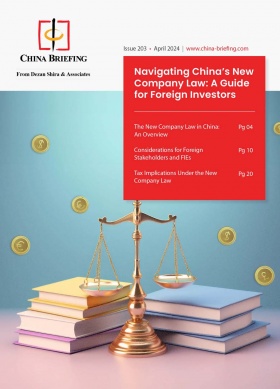China May 2024 Economic Roundup: Consumption and Trade Rebound Amid Slowing Industrial Output
China’s National Bureau of Statistics (NBS) has released the economic indicators for May, offering a comprehensive overview of the performance of industry, services, consumption, foreign trade, and investment.
The data indicates a slowdown in industrial output growth, despite some manufacturing sectors still showing robust performance. In contrast, consumption is on the rise, driven by growth in services, retail sales, and imports. The uptick in these areas suggests a strengthening of domestic demand, spurred by a stabilizing global economic situation and the boost from the Labor Day Holiday at the beginning of May.
China’s foreign trade also continued to show marked improvement, reflecting the country’s strong export capabilities and increasing imports.
Despite these positive trends, challenges remain in sustaining economic momentum. The balance between stimulating domestic demand and maintaining steady industrial growth will be crucial for China’s economic outlook in the coming months.
Industrial growth slows but maintains a steady pace
Year-on-year growth in China’s industrial sector slowed in May from the previous month but remained relatively strong. Total industrial value-added output grew by 5.6 percent year-on-year in May, a month-on-month increase of 0.3 percent but a deceleration from 6.7 percent year-on-year growth recorded in April. Value-added output of the manufacturing industry grew 6 percent year-on-year, a deceleration from the 7.5 percent year-on-year in April.
According to NBS spokesperson Liu Aihua, equipment manufacturing played a crucial role in stabilizing overall industrial growth. The sector’s added value increased by 7.5 percent from the previous year, contributing 2.6 percentage points to the growth of all industries above the designated size and accounting for 45.7 percent of the total growth. Within this sector:
- Computer, Communication, and Other Electronic Equipment Manufacturing: Grew by 14.5 percent year-on-year.
- Railway, Shipbuilding, Aerospace, and Other Transportation Equipment Manufacturing: Increased by 11.8 percent year-on-year.
Certain high-tech and electronic equipment manufacturing sectors exhibited particularly strong performance:
- High-tech manufacturing: 10 percent year-on-year growth.
- 3D printing equipment production: 36.3 percent year-on-year growth.
- New energy vehicles: 33.6 percent year-on-year growth.
- Integrated circuits: 17.3 percent year-on-year growth.
- Television equipment manufacturing: 30.7 percent year-on-year growth.
- Communication equipment manufacturing: 15.7 percent year-on-year growth.
However, the automobile manufacturing sector decelerated significantly from a 16.3 percent year-on-year jump in April to 7.6 percent year-on-year growth in May, possibly due to falling domestic demand.
From January to May, the total value-added output of industrial enterprises above a designated size (those with an annual main business income of over RMB 20 million) increased by 6.2 percent year-on-year. Notably, private companies continued to outperform state-owned enterprises (SOEs), with value-added output increasing 5.9 percent year-on-year, compared to 3.6 percent for SOEs. Value-added output of foreign-invested enterprises (FIEs), meanwhile, grew 2.5 percent year-on-year.
Service industry expansion accelerates
In May, China’s services industry demonstrated notable performance, significantly contributing to the overall economic stability and growth. Several key factors, including favorable macroeconomic policies, improving external demand, and the boost from the Labor Day holiday, played a pivotal role in this sector’s recovery.
The services production index rose by 4.8 percent year-on-year in May, an improvement of 1.3 percentage points from the previous month. The Labor Day Holiday that took place at the beginning of the month significantly boosted tourism and related activities. During the holiday, the number of domestic tourists and total travel expenses increased by 7.6 percent and 12.7 percent year-on-year respectively, while box office revenue of commercial performances (excluding entertainment venues) nationwide increased by 37.2 percent year-on-year.
This surge in holiday travel and leisure activities positively impacted transportation, warehousing, postal services, accommodation, and catering industries.
Overall, several service industries recorded healthy growth in May:
- Information transmission, software, and IT services: 12.9 percent year-on-year increase.
- Leasing and business services: 8.8 percent year-on-year increase.
- Transportation, warehousing, and postal services: 5.6 percent year-on-year increase.
- Wholesale and retail: 5 percent year-on-year increase.
Between January and May, the services production index increased by 5 percent year-on-year, with the revenue of service enterprises above a designated size growing 8.2 percent year-on-year.
Retail sales rebound, but inflation remains low
Total retail sales of consumer goods reached RMB 3.92 trillion (US$540.6 billion) in May, up 3.7 percent year-on-year, marking an acceleration from the 2.3 percent growth recorded in April. Between January and May, total retail sales of consumer goods reached RMB 19.5 trillion (US$2.7 trillion), up 4.1 percent year-on-year.
Key highlights include:
- Urban retail sales: 3.7 percent year-on-year increase.
- Rural retail sales: 4.1 percent year-on-year increase.
- Merchandise sales: 3.6+ring revenue: 5 percent year-on-year increase.
Sales of lifestyle products saw notable growth, including sports and entertainment goods (20.2 percent), cosmetics (18.7 percent), communication equipment (16.6 percent), and household appliances and audiovisual equipment (12.9 percent).
Online retail sales continued to grow robustly, reaching RMB 5.77 trillion in the first five months of the year, an increase of 12.4 percent from 2023. Of this, online retail sales of physical goods reached RMB 4.83 trillion (US$665.64 billion), up 11.5 percent year on year, accounting for 24.7 percent of total retail sales during this period.
Between January and May 2024, retail sales of services increased by 7.9 percent year-on-year. According to Yuan Yan, Chief Statistician of the Department of Trade and Economics at the NBS, the growth rate fell compared to the January to April period due partly to the higher base effect in the same period in 2023.
The growth rate of retail sales of services was 4.4 percentage points higher than that of the retail sales of goods over this period.
Despite the uptick in demand, inflation remained subdued in May, with the national consumer price index (CPI) increasing by 0.3 percent year-on-year, consistent with April’s rate. Food prices decreased by 2 percent year-on-year, narrowing the decline by 0.7 percentage points compared to the previous month.
Of this:
- Pork, freshwater fish, and fresh vegetable prices rose by 4.6 percent, 3.3 percent, and 2.3 percent year-on-year respectively.
- Egg, fresh fruit, and edible oil prices decreased by 8.5 percent, 6.7 percent, and 5.1 percent year-on-year respectively.
Non-food prices increased by 0.8 percent, with the increase rate falling by 0.1 percentage points compared to the previous month. Among non-food items, energy prices rose by 3.4 percent year-on-year, with the increase rate falling by 0.2 percentage points compared to the previous month. Service prices rose by 0.8 percent, with the increase rate remaining the same as the previous month.
Core CPI, excluding food and energy prices, rose by 0.6 percent year-on-year.
Foreign trade surges amid strong exports
China’s foreign trade surged in May, with a total trade volume of RMB 3.71 trillion (US$511.8 billion), up 8.6 percent year-on-year. Of this, exports surged 11.2 percent year-on-year to RMB 2.15 trillion (US$296.3 billion), while imports increased 5.2 percent year-on-year to RMB 1.56 trillion (US$215 billion).
Between January and May 2024, the total import and export volume reached RMB 17.50 trillion (US$2.42 trillion), a 6.3 percent year-on-year increase. Exports of mechanical and electrical products rose by 7.9 percent year-on-year, making up 59 percent of total exports.
These figures indicate a remarkable rebound after a challenging period. Throughout 2023, the nation grappled with stagnant trade growth, a consequence of weakened demand in key export markets like the EU and the US. Total foreign trade in 2023 saw a mere 0.2 percent growth, with exports inching up by just 0.6 percent, while imports experienced a slight decrease of 0.3 percent year-on-year.
In the first five months of 2024, China’s fixed asset investment (FAI) reached RMB 18.8 trillion (US$2.59 trillion), marking a 4 percent year-on-year increase. Of this, public sector investment grew by 7.1 percent year-on-year, while private sector investment increased just 0.1 percent year-on-year.
Excluding real estate development investment, FAI grew 8.6 percent.
Breaking down the investment by sector, infrastructure investment grew by 5.7 percent, manufacturing investment by 9.6 percent, while real estate development investment experienced a decline of 10.1 percent. Notably, investment in high-tech industries saw significant growth, with an 11.5 percent year-on-year increase.
Foreign FAI continued to fall, reflecting the ongoing difficulties and uncertainties faced by FIEs in China. Between January and May 2024, FAI by FIEs fell by 15.4 percent year-on-year, with the decline expanding by 0.2 percentage points from the January to April period. In contrast, domestic enterprise investment rose by 3.8 percent year-on-year, and Hong Kong, Macao, and Taiwan enterprise investment increased by 6.6 percent year-on-year.
About Us
China Briefing is one of five regional Asia Briefing publications, supported by Dezan Shira & Associates. For a complimentary subscription to China Briefing’s content products, please click here.
Dezan Shira & Associates assists foreign investors into China and has done so since 1992 through offices in Beijing, Tianjin, Dalian, Qingdao, Shanghai, Hangzhou, Ningbo, Suzhou, Guangzhou, Haikou, Zhongshan, Shenzhen, and Hong Kong. We also have offices in Vietnam, Indonesia, Singapore, United States, Germany, Italy, India, and Dubai (UAE) and partner firms assisting foreign investors in The Philippines, Malaysia, Thailand, Bangladesh, and Australia. For assistance in China, please contact the firm at china@dezshira.com or visit our website at www.dezshira.com.
- Previous Article China’s 2024-25 Energy Conservation and CO2 Reduction Plan – Compliance Considerations for Businesses
- Next Article Guide to HR Compliance and Best Practices in China
